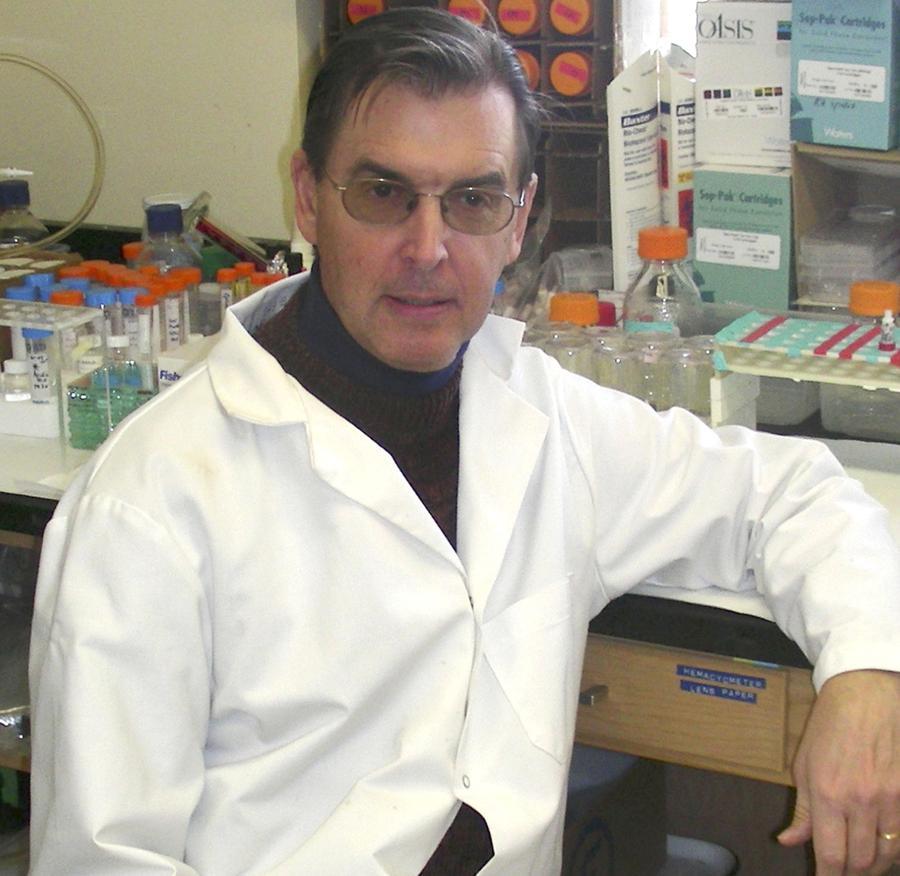The receipts clogging up your wallet or purse may very well contain high levels of bisphenol A or BPA, a chemical that can be absorbed into the bloodstream via touch, a recent MU study found.
Published in October 2014 by members of the Endocrine Disruptors Group at MU, the study found that the receipt paper, called thermal paper, is coated with BPA, which acts as a color developer that interacts with dye as the stylus touches the paper. As people handle the BPA-laced receipts, the amount of BPA in their body increases. Past research has linked BPA to serious health problems.
Frederick vom Saal, Curators’ Professor of biological sciences and a member of the Endocrine Disruptors Group, was the lead researcher in the study and he is confident his study will change little about the multi-million dollar chemical industry.
“The problem is, the developers that are used in thermal paper are very weak in terms of being able to bind to these dyes, so they have to coat the paper with massive amounts of it,” vom Saal said. “And so this chemical that’s used as a developer, BPA, just happens to also be able to bind to the receptors that allow your body to respond to estrogens.”
In their study of thermal paper, the researchers first gathered about 50 samples of receipt paper from around Columbia and other cities. They first had their subjects hold the samples when their hands were dry and measured how much BPA the people absorbed into their systems with blood and urine samples.
Julia Taylor is an assistant research professor of biological sciences and a member of the Endocrine Disruptors Group.
“We really weren’t measuring very much, but we knew it was getting into the body, and the question was, if we jacked it up a little bit, could we see something?” Taylor said.
What the researchers did next was have subjects use hand sanitizer and hold receipts for four minutes. Subjects were then asked to take a few French Fries and eat one, then drop another from the same handful into a test tube. Only one hand was allowed to touch the French fries. Blood samples were collected over a 90-minute period.
“What we found was, the BPA levels in the blood went up, and up, and up,” Taylor said. “If we were sampling from the arm with the dirty hand, the (BPA) levels were much higher than if we were sampling from the other arm. If they sampled from the other arm instead, the clean side, then we had much lower levels. What we did find was this combination of holding (receipts) with wet hands and eating really did boost BPA levels in people.”
The researchers also found that the levels of BPA in the urine of these same subjects were much higher than levels of BPA found in the urine of the general population.
The effects of high levels of BPA in people are difficult to study, as you can’t just give a person high levels of the chemical and wait to see what happens. However, other studies have shown that there is a link between high amounts of BPA in urine samples and serious health conditions like cardiovascular disease, obesity, and diabetes.
In addition to these illnesses, animals that are exposed to a large amount of BPA, often pre-natally, have developed prostate cancer. BPA is also thought to be linked to the proliferation of breast cancer cells in women and infertility in men due to its effect on estrogens in the human body.
“BPA just happens to also be able to bind to the receptors that allow your body to respond to estrogens,” vom Saal said. “So the idea that there’s a female sex hormone coating thermal paper is probably not something most people think about when they handle (it).”
The chemical that replaces BPA in many products marked “BPA-free,” like refillable plastic water bottles, is called bisphenol S, or BPS. BPS is similar to BPA in many ways, including that both chemicals act as estrogens.
Fifty percent of the receipt samples taken by the researchers contained BPS, as opposed to 40 percent that contained BPA. BPS is often used as a replacement for BPA because there aren’t as many studies done on it and it is thought to be somewhat safer than BPA. However, this hasn’t been proven.
“Unfortunately, (another) thing we showed in this paper is that the chemical that’s replacing (BPA) in BPA-free paper is actually essentially structurally and functionally identical to BPA,” vom Saal said. “So, it’s got a little slight molecular change in it, but it’s like changing one toxic chemical for another toxic chemical.”
Vom Saal said he has become frustrated with regulatory agencies that don’t appear to have the best interests of the public in mind. He says that he has experienced several times the Food and Drug Administration simultaneously saying that BPA is safe while recommending that people avoid it.
“We’re very aggressively going after the position of the Food and Drug Administration that is essentially talking out of both sides of its mouth at the same time,” vom Saal said.
Since BPA was determined to be generally safe in 1963, the chemical has become a multi-million dollar industry. BPA is used in many consumer products, including plastic water bottles, receipt paper, takeout containers, food cans and eyeglass lenses.
Because of BPA’s large economic presence in the chemical industry, vom Saal said, he has been the subject of some harassment as a result of speaking out against the use of the chemical.
“Everything we do, they attack,” vom Saal said. “Every meeting I go to, they send people to ask stupid questions and basically harass me. I’ve been followed. They’ve gone through my garbage. It just goes with the territory.”
Vom Saal also said that certain chemical companies have also tried to discredit the papers he and his colleagues have published, going as far as to suggest that the labs in which they conducted the studies were contaminated. In fact, the National Institutes of Health confirmed their labs to be uncontaminated and capable of accurately measuring BPA levels.
“The problem they have in attacking people like me is: I have no financial interest in BPA, absolutely none,” vom Saal said. “It’s not like I’m going to make money if you don’t handle thermal paper. And the other side of that is that in science, if you publish something and it’s not verified, you really take a nosedive in terms of your credibility.”
Despite publishing a study that shows just how easy it is for people to absorb large amounts of such a potentially dangerous chemical, Taylor and vom Saal said that the likelihood of anything changing to reduce the use of BPA is small due to the limited influence of the regulatory agencies that would have any power to control its use.
“The EPA, for example, I do believe does try and makes recommendations, but it really doesn’t have the money or the time to keep up with the sheer volume of things that it really needs to keep up with,” Taylor said. “Nothing changes. Somebody else has to enforce it, and the trouble is that nobody enforces. Because the production of these (chemicals) is a multi-million dollar industry, and it’s quite cheap to produce, it would take an enormous amount to stop these things that are clearly health hazards.”
Researchers like Taylor and vom Saal are frustrated with the lack of progress in preventing the use of BPA, despite the evidence out there showing how prevalent it is and how potentially harmful.
“In terms of the use of chemicals in products that we handle and food containers that we eat out of and bottles that we drink out of, we’re in the Wild West,” vom Saal said. “The amount of BPA used per year is now 15 billion pounds. So there’s just massive amounts of this in products and no matter how much is published about it, nothing’s happening.”






